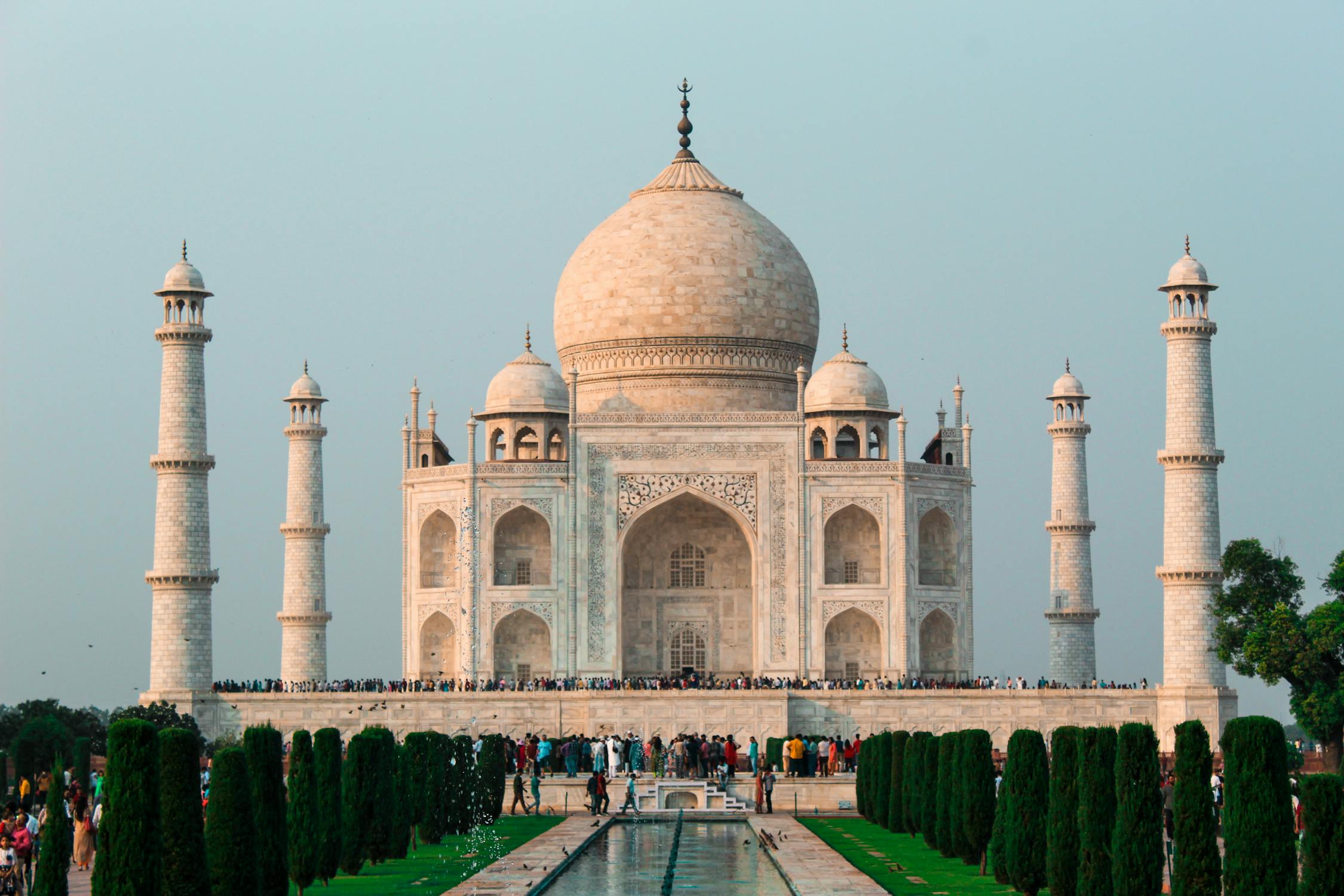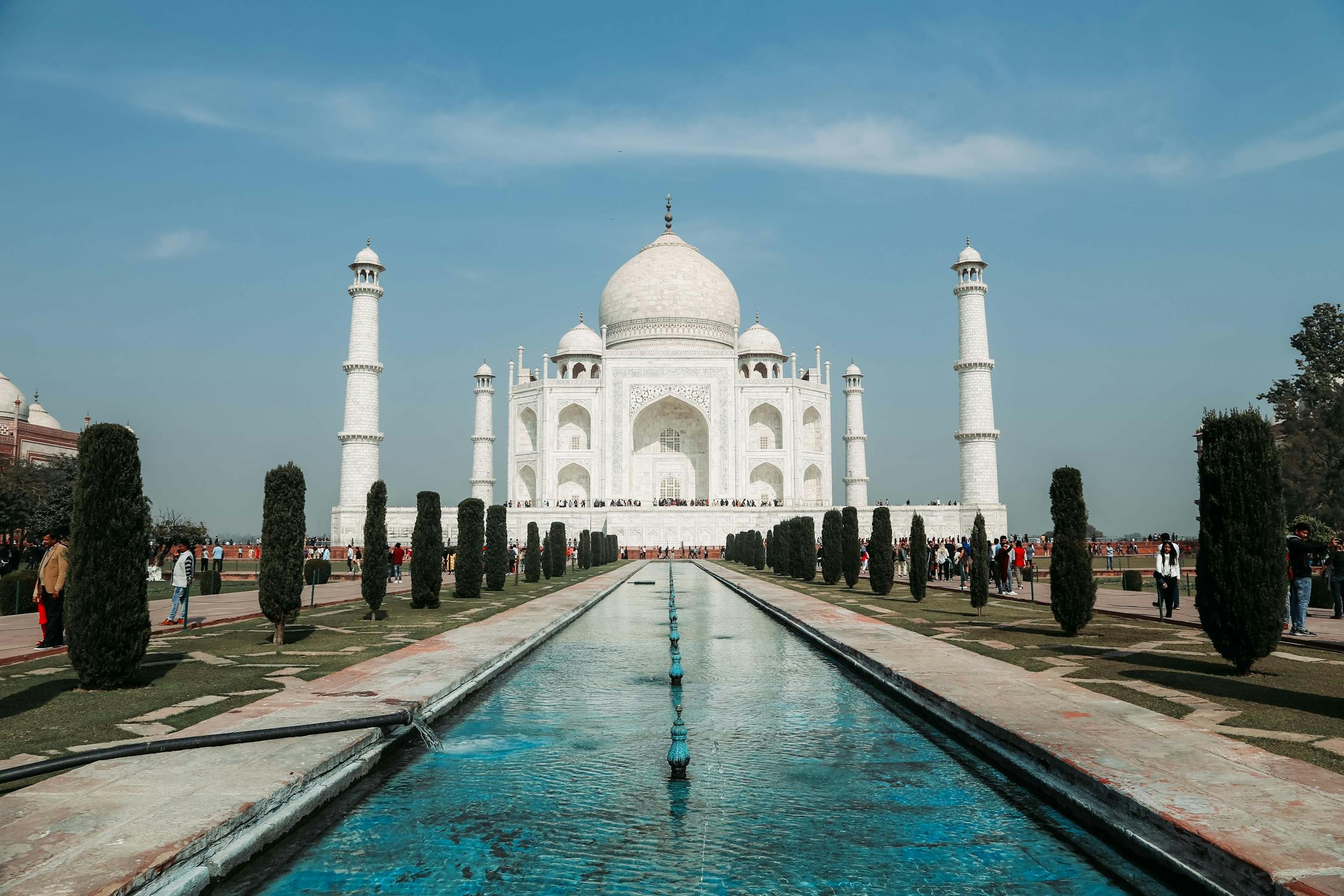The Majestic Beauty of India's Taj Mahal

India's Taj Mahal, a UNESCO World Heritage site, stands as a stunning testament to the architectural genius and cultural richness of the Mughal era. Located in Agra, Uttar Pradesh, this white marble mausoleum was commissioned by Emperor Shah Jahan in 1632 in memory of his beloved wife, Mumtaz Mahal. Renowned for its breathtaking beauty and intricate craftsmanship, the Taj Mahal attracts millions of visitors each year, making it one of the most iconic symbols of love and artistry worldwide.
Historical Background
The story behind the Taj Mahal is both poignant and fascinating. Shah Jahan, deeply grieved by the death of his wife Mumtaz Mahal during childbirth, decided to build a monument that would immortalize her memory. The construction began in 1632 and took approximately 22 years to complete, with over 20,000 artisans and laborers working tirelessly on the project.
The design of the Taj Mahal incorporates elements from Persian, Islamic, and Indian architectural styles. Ustad Ahmad Lahauri is widely credited as the principal designer. The mausoleum’s central dome reaches a height of 73 meters (240 feet) and is surrounded by four minarets, each standing at 40 meters (130 feet) tall.
The entire complex is adorned with intricate carvings, calligraphy of Quranic verses, and inlaid gemstones. The materials used include white marble brought from Makrana in Rajasthan, jade from China, turquoise from Tibet, and sapphire from Sri Lanka.
Architectural Marvel
The Taj Mahal’s architecture is a marvel of symmetry and geometry. The main structure rests on a raised square platform with chamfered corners, forming an unequal octagon. This layout ensures that the mausoleum maintains its visual balance from any angle.
One of the most striking features is the large central dome flanked by smaller domes. The main dome’s lotus design adds to its height and grace. The finial atop combines traditional Islamic and Hindu decorative elements.
- The garden surrounding the Taj Mahal follows the Charbagh layout, symbolizing paradise.
- Reflecting pools enhance the visual appeal and create mirror images of the monument.
- The main entrance gate is an impressive structure adorned with intricate calligraphy and floral motifs.
Symbolism and Meaning
The Taj Mahal is often described as a "symbol of love," but its significance goes beyond romanticism. It embodies the artistic achievements of the Mughal era and serves as a symbol of India's rich cultural heritage. The use of white marble signifies purity and spirituality, while the symmetrical design represents balance and harmony.
The mausoleum also reflects Shah Jahan's vision of beauty merging with eternity. The Quranic inscriptions are not just decorative; they convey themes of judgment and paradise, reinforcing the spiritual aspect of this grand edifice.
Visitor Experience
Visiting the Taj Mahal offers an unforgettable experience. Upon entering through the grand gateway, visitors are greeted with a stunning view that gradually reveals itself as they walk closer. The early morning or late afternoon light enhances the monument's ethereal beauty, casting a soft glow on its marble surfaces.
To make the most of your visit:
- Arrive early to avoid crowds and witness the sunrise over the Taj Mahal.
- Hire a knowledgeable guide to gain deeper insights into its history and architecture.
- Take time to explore the surrounding gardens and reflect upon their serene beauty.
- Visit nearby attractions such as Agra Fort to enrich your historical understanding.
Preservation Efforts
Preserving the Taj Mahal has been an ongoing challenge due to environmental factors like air pollution and acid rain. Various measures have been implemented to protect this heritage site:
| Measure | Details |
|---|---|
| Pollution Control | Regulating industrial emissions around Agra; using cleaner fuel alternatives. |
| Regular Cleaning | Cleaning the marble surfaces with mud packs to remove pollutants. |
| Visitor Management | Implementing ticketing systems to control visitor numbers; providing guidelines for tourists. |
| Restoration Projects | Continuous restoration efforts to repair damages and maintain structural integrity. |
Cultural Impact
The influence of the Taj Mahal extends beyond India’s borders. It has inspired numerous replicas and adaptations across different cultures. From Bangladesh’s Tajmahal Bangladesh to Dubai’s replica in Global Village, this monument continues to captivate hearts globally.
Moreover, it frequently features in literature, films, music videos, and art exhibitions worldwide. Its universal appeal lies in its timeless beauty and profound symbolism that transcends cultural boundaries.
The Majestic Beauty of India's Taj Mahal not only serves as a monument to love but also stands as a testament to human creativity and architectural excellence. Its historical significance combined with its unparalleled elegance makes it a must-visit destination for people around the globe. Whether you are an admirer of history or architecture or simply seeking inspiration from one of humanity’s greatest achievements, the Taj Mahal offers something uniquely enriching for everyone.
This iconic landmark continues to attract millions each year, ensuring that its legacy endures through generations. As you walk through its gates and witness its splendor firsthand, you will undoubtedly be reminded why this masterpiece remains one of the New Seven Wonders of the World.
References: Britannica.comUNESCO.org
Architectural Digest.com
